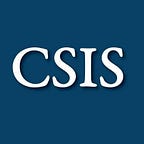A Revealing Look into Trump Trade Policymaking
By Matthew P. Goodman, Daniel Remler| March 2, 2017 on CSIS.org
On Wednesday, March 1, the Office of the U.S. Trade Representative (USTR) released the President’s 2017 Trade Policy Agenda, as mandated under the Trade Act of 1974. Despite a few elements that raised eyebrows — notably the suggestion that the Trump administration might not implement dispute-settlement rulings against it by the World Trade Organization (WTO) — the document was a surprisingly conventional presentation of many longstanding tenets of U.S. trade policy: opening foreign markets to U.S. exports; enforcing U.S. trade laws; negotiating trade agreements that benefit American workers, businesses, farmers, and ranchers; and so on.
However, the final release on March 1 differed in minor but telling ways from the bootleg draft that was widely circulated the night before and reported by the Financial Times. The changes may suggest a substantive shift in the administration’s trade policy, or they may point to continued procedural disarray and conflicting viewpoints inside the White House.
The significant changes between the two drafts include:
- The words “members of” were added to the first, critical reference to the WTO in the document, suggesting that individual countries rather than the organization itself are to blame for impinging on U.S. rights; the final version reads, “Resisting efforts by other countries — or Members of international bodies like the World Trade Organization (WTO) — to advance interpretations that would weaken the rights and benefits of, or increase the obligations under, the various trade agreements to which the United States is a party.”
- The following sentence was struck from the final document: “Ever since the United States won its independence, it has been a basic principle of our country that American citizens are subject only to laws and regulations made by the U.S. government — not rulings made by foreign governments or international bodies.”
- An additional “key objective” of Trump administration trade policy was added: “Enforcing labor provisions in existing agreements and enforcing the prohibition against the importation and sale of goods made with forced labor.”
- A reference in the earlier draft to currency manipulation as one of the causes of market obstruction was softened from, “In some instances, foreign currencies have been manipulated in a manner that makes U.S. goods and services artificially expensive,” to, “Concerns have also been raised over currency practices and their impact on the competitiveness of U.S. goods and services.”
- Tough language on reciprocity as a principle that would be applied to countries that refused to open their markets was softened to, “Encourage other countries to give U.S. producers fair, reciprocal access to their markets.”
- In a discussion of how trade agreements have not lived up to expectations, this sentence was added: “Many factors contribute to this, notably the financial crisis of 2008–2009 and the broad impact of automation.”
- In the final version, there was no reference to China’s increasing share of global output at the expense of the United States. The final document also dropped a reference to how China does not “act on the basis of market principles.”
The softening of tone and substance between the two versions may imply a fundamental shift in Trump trade policy on questions such as the legitimacy of multilateral institutions, aggressive pursuit of currency manipulation, and China’s responsibility for U.S. economic woes. The acknowledgment that trade agreements negotiated to date have produced “substantial benefits” for some American workers and businesses, and that automation is responsible for much of the disruption in the U.S. workplace, may reflect a “rendezvous with reality” by the president and his top advisers.
Perhaps. But more likely is that the edits reflect a White House policymaking process that is still at best ill-formed. This is of course speculation, but the document reads as if USTR staffers, with behind-the-scenes guidance from USTR-designate Robert Lighthizer, produced the first draft. National Trade Council director Peter Navarro may have then added some rhetorical flourishes, including references to China’s gaining at the expense of the United States, as he has long argued. But in the final editing — perhaps done by National Economic Council director Gary Cohn — some of the more controversial statements were struck or pared back.
To be fair, this particular annual trade report is typically more aspirational than operational, and most administrations struggle to meet the first congressionally mandated deadline less than six weeks into their term. But the way this document evolved overnight is more suggestive of a divergence of views among different power centers in the White House — and the absence of settled policymaking processes — than a coming together around a coherent trade strategy to guide the administration over the next year and beyond.
Matthew P. Goodman is senior adviser for Asian economics and holds the William E. Simon Chair in Political Economy at the Center for Strategic and International Studies (CSIS) in Washington, D.C. Daniel Remler is a research assistant with the CSIS Simon Chair.
Commentary is produced by the Center for Strategic and International Studies (CSIS), a private, tax-exempt institution focusing on international public policy issues. Its research is nonpartisan and nonproprietary. CSIS does not take specific policy positions. Accordingly, all views, positions, and conclusions expressed in this publication should be understood to be solely those of the author(s).
© 2017 by the Center for Strategic and International Studies. All rights reserved.
